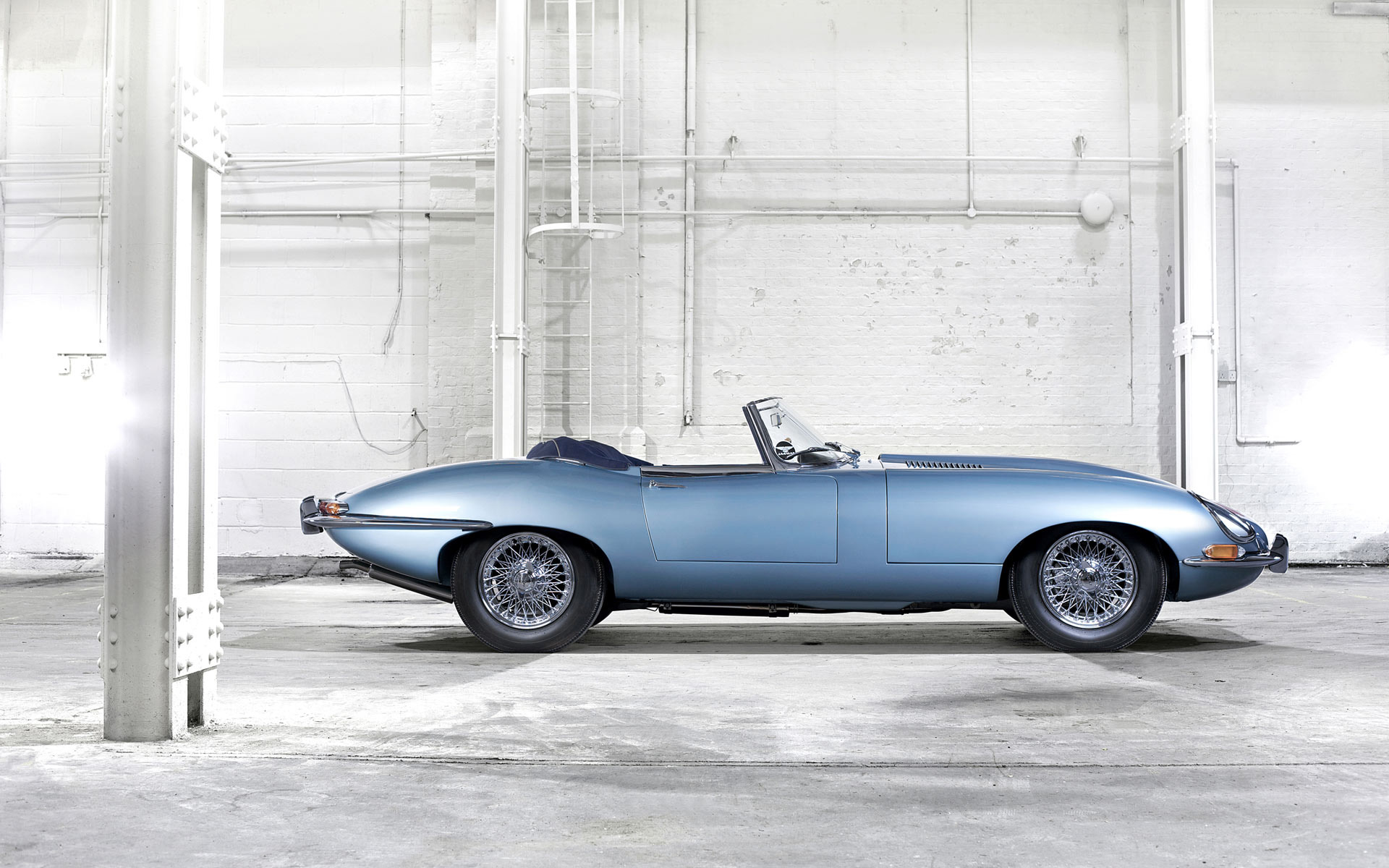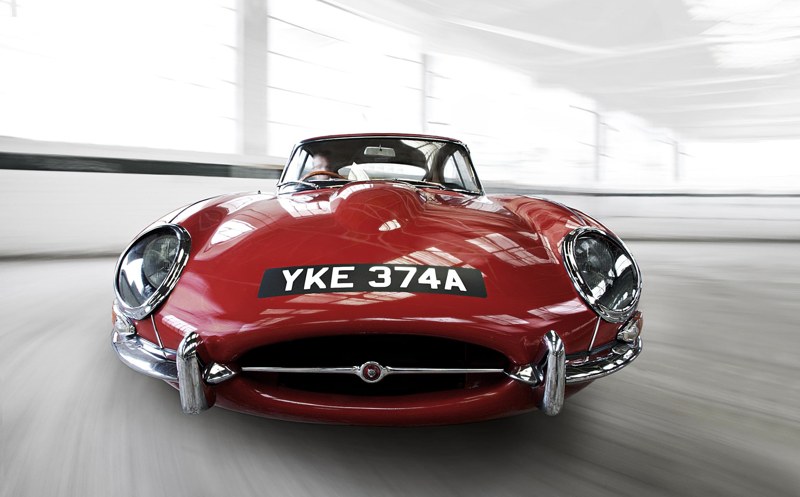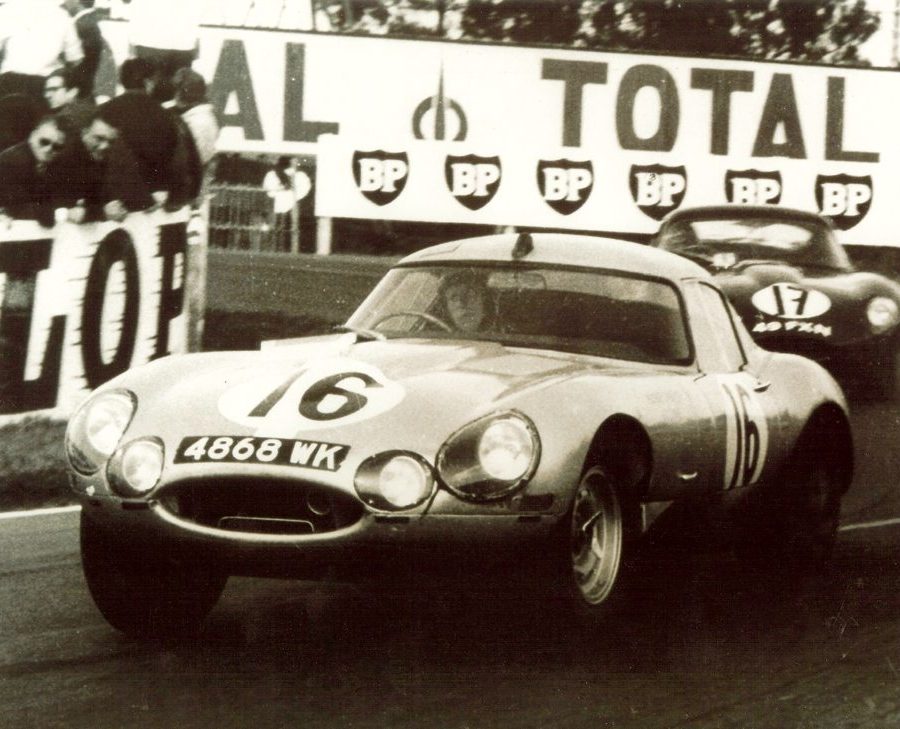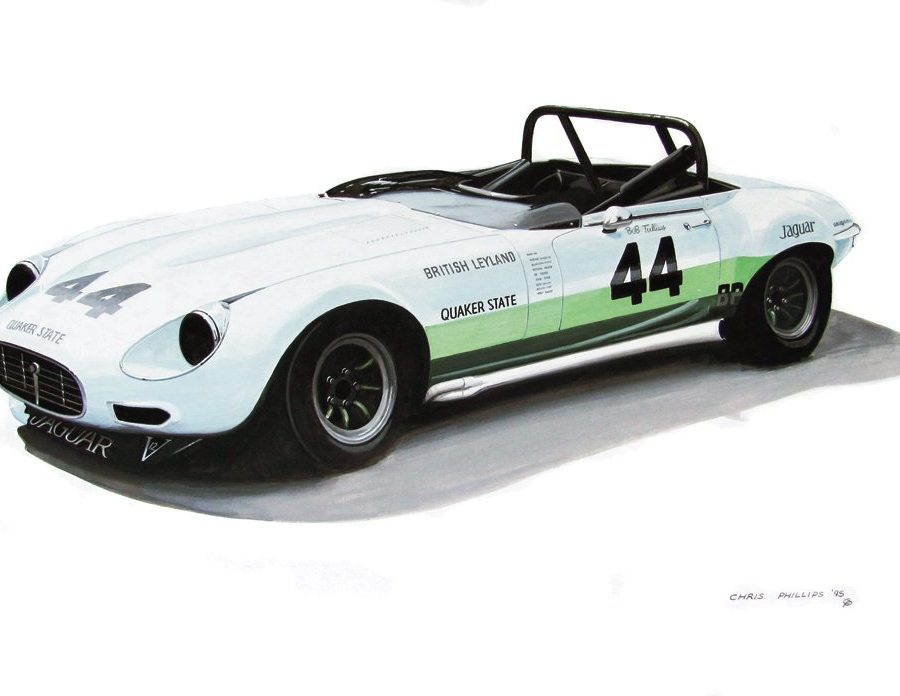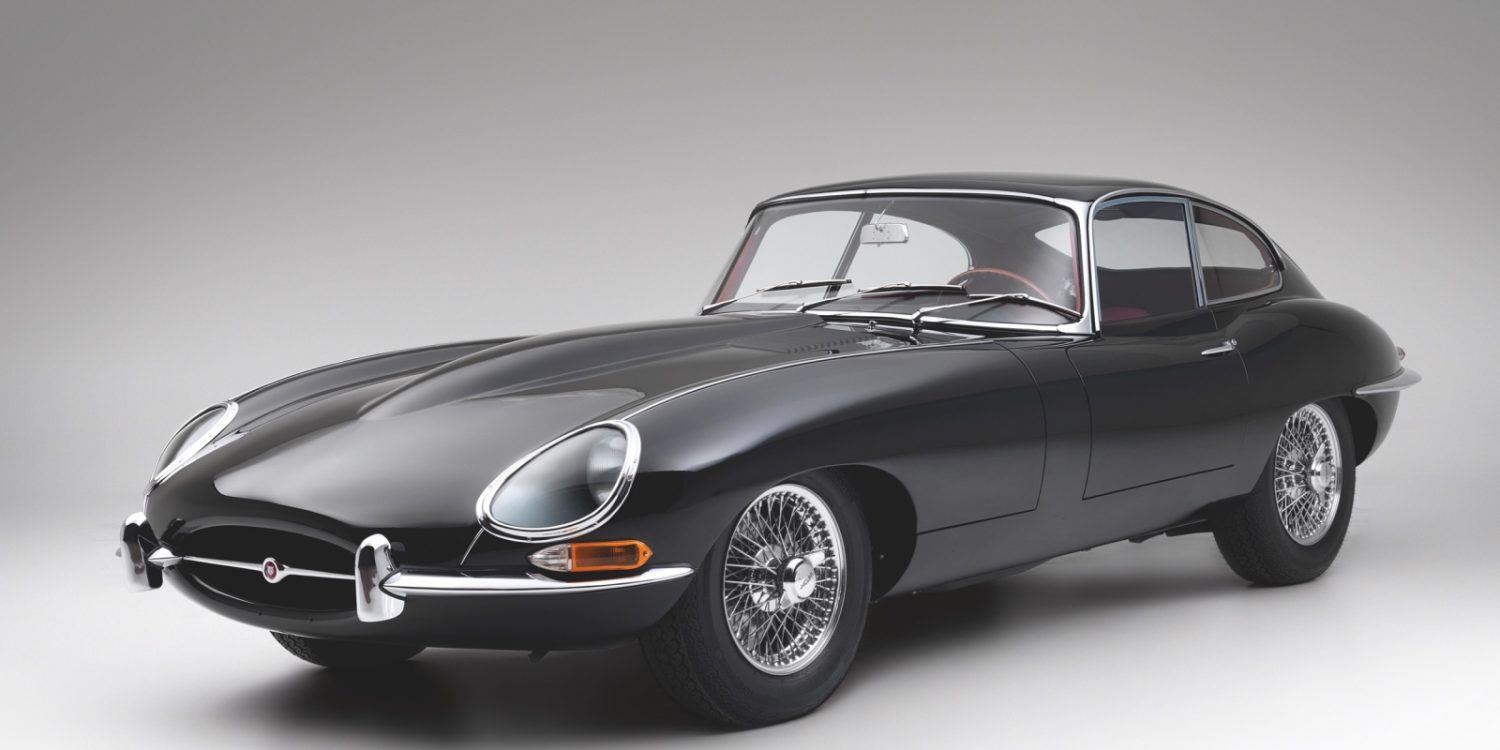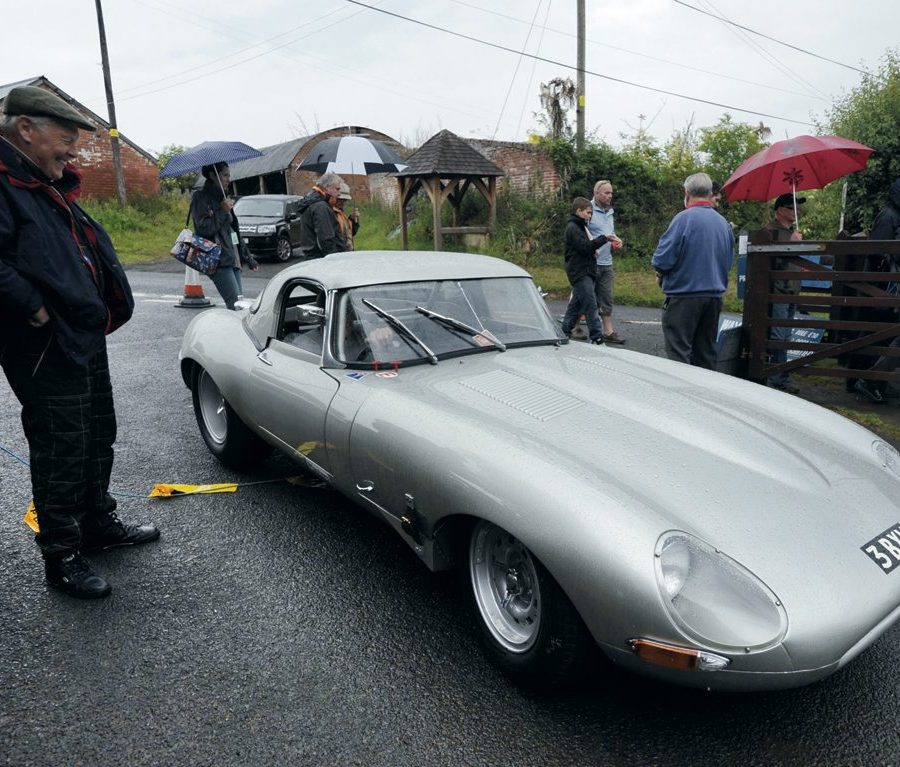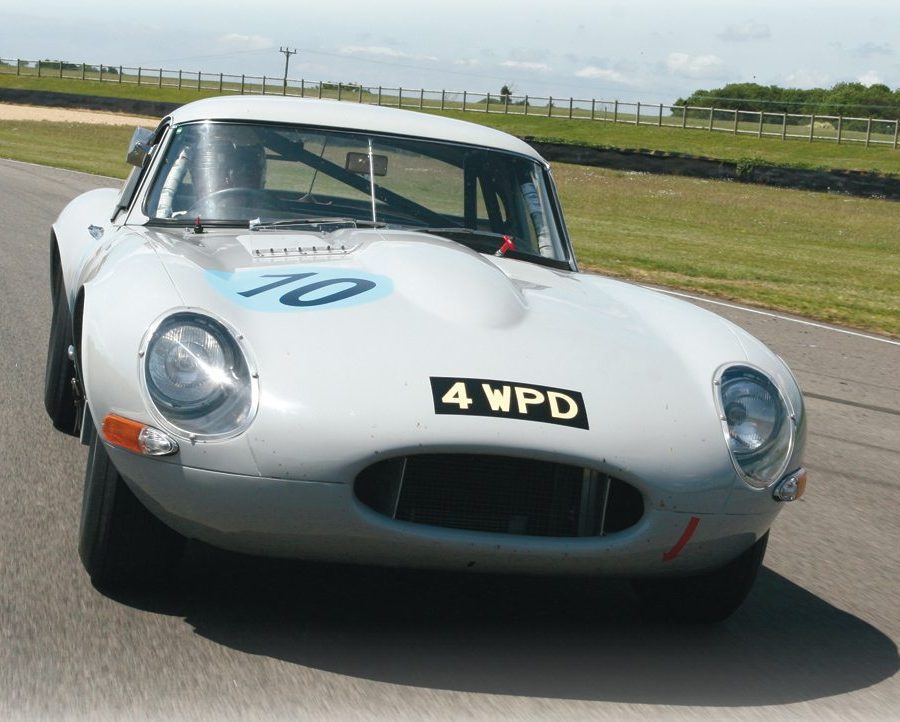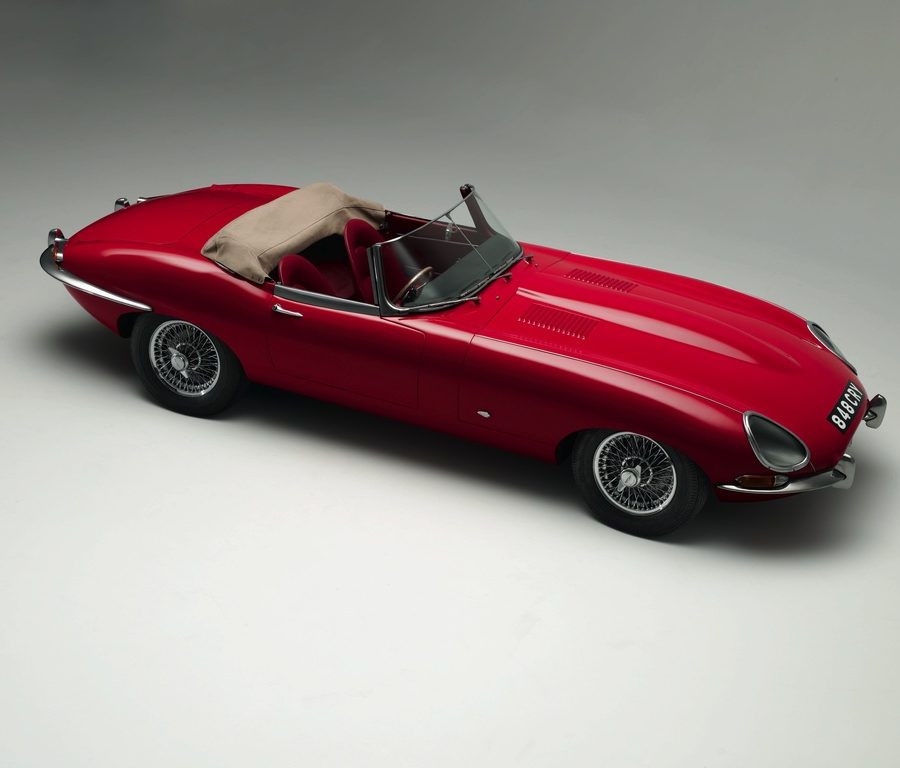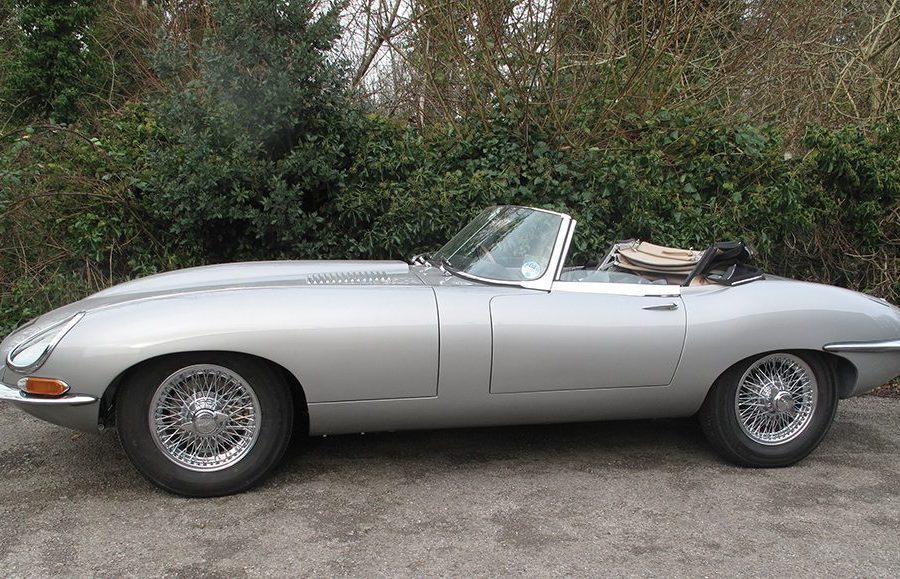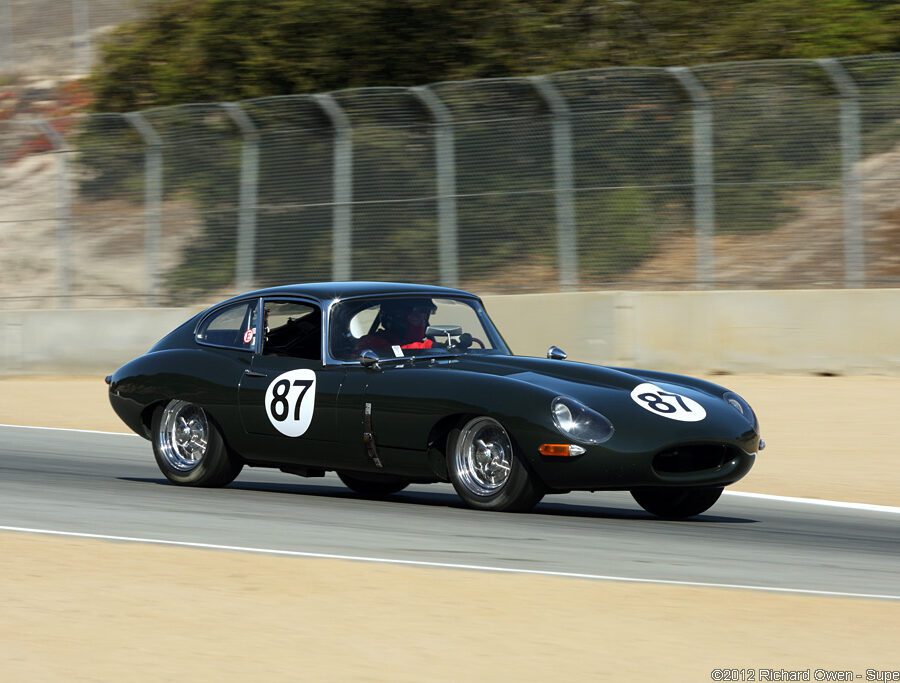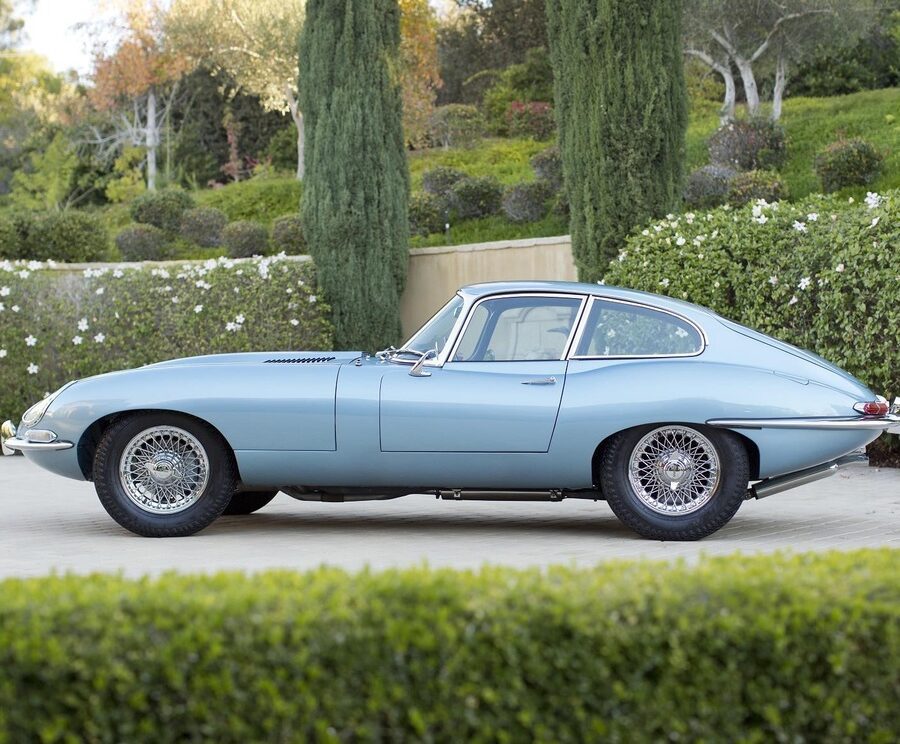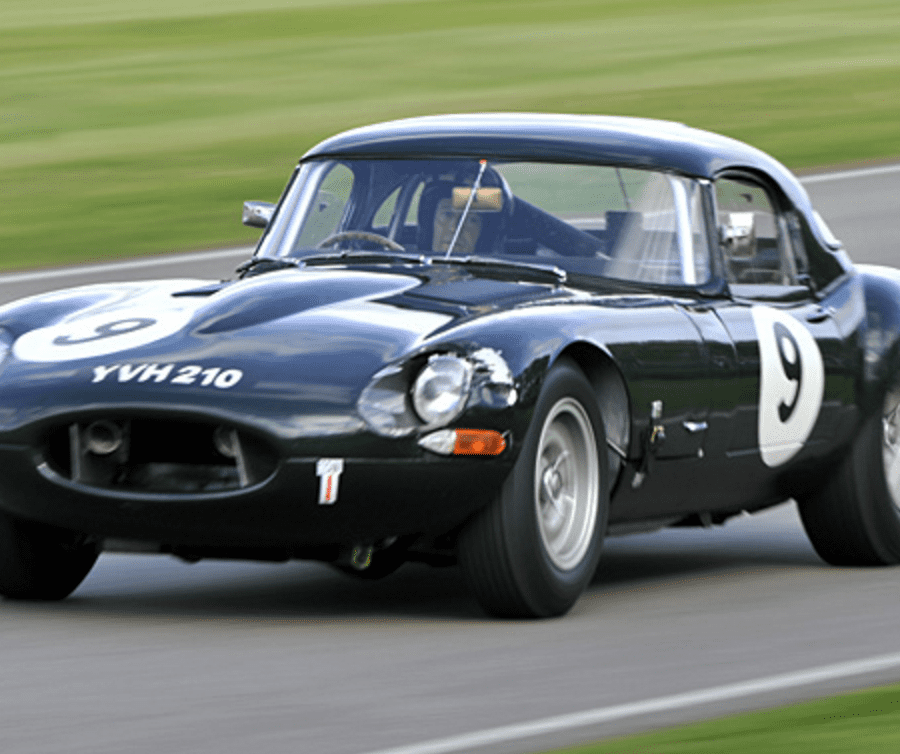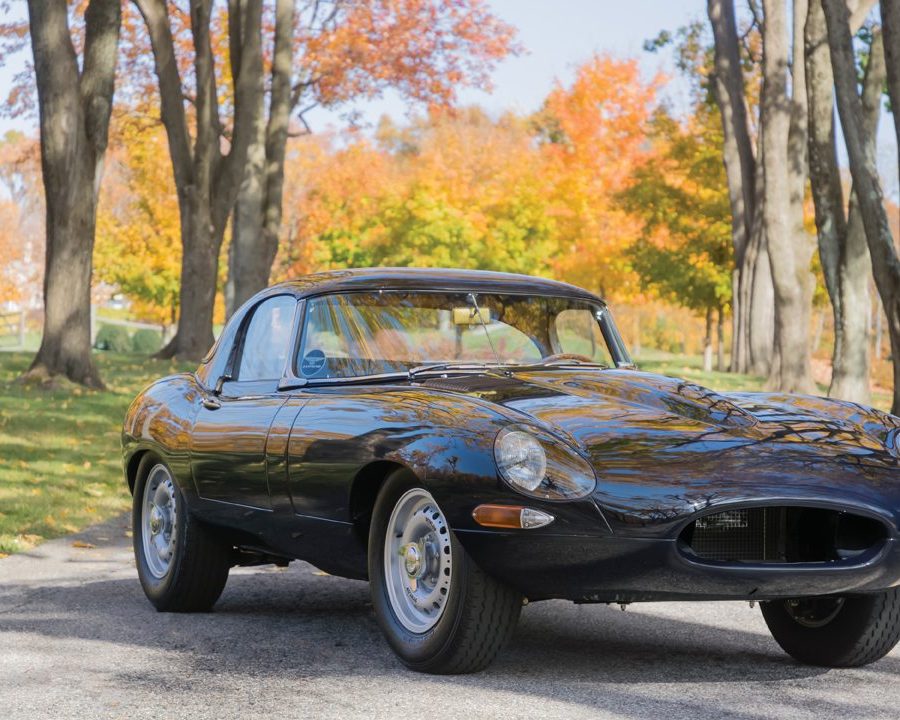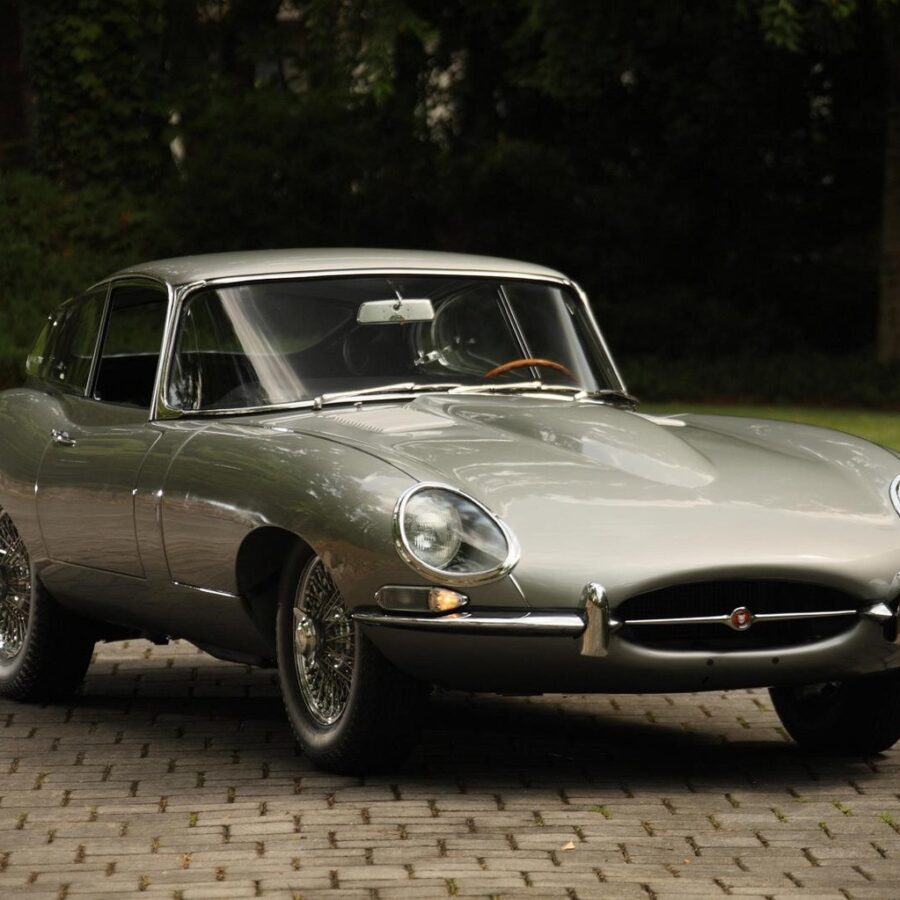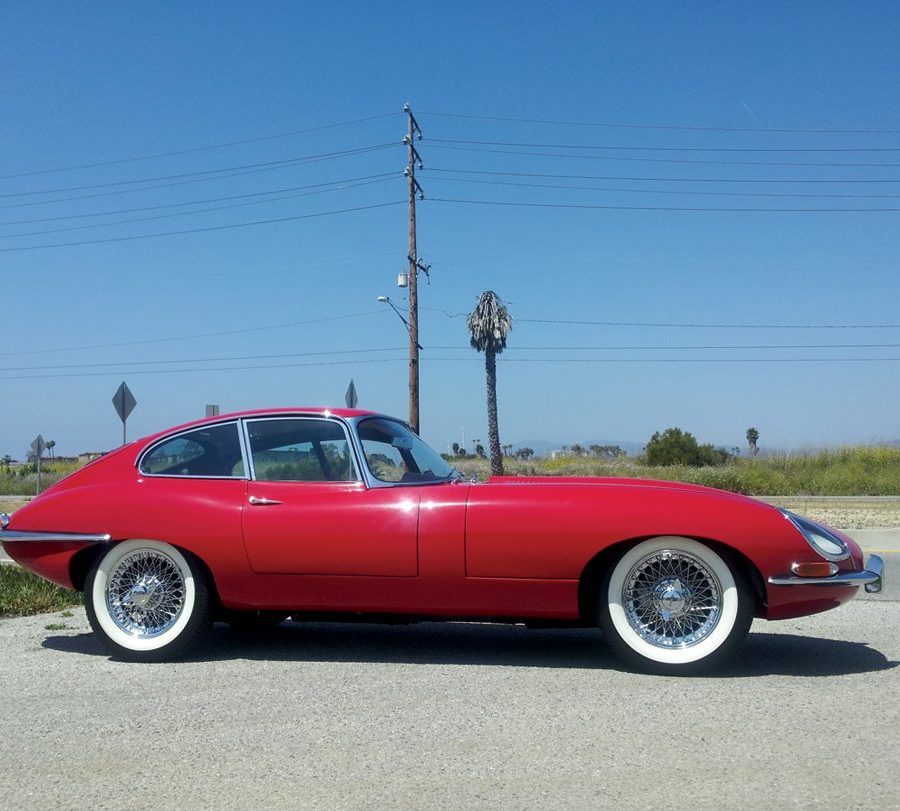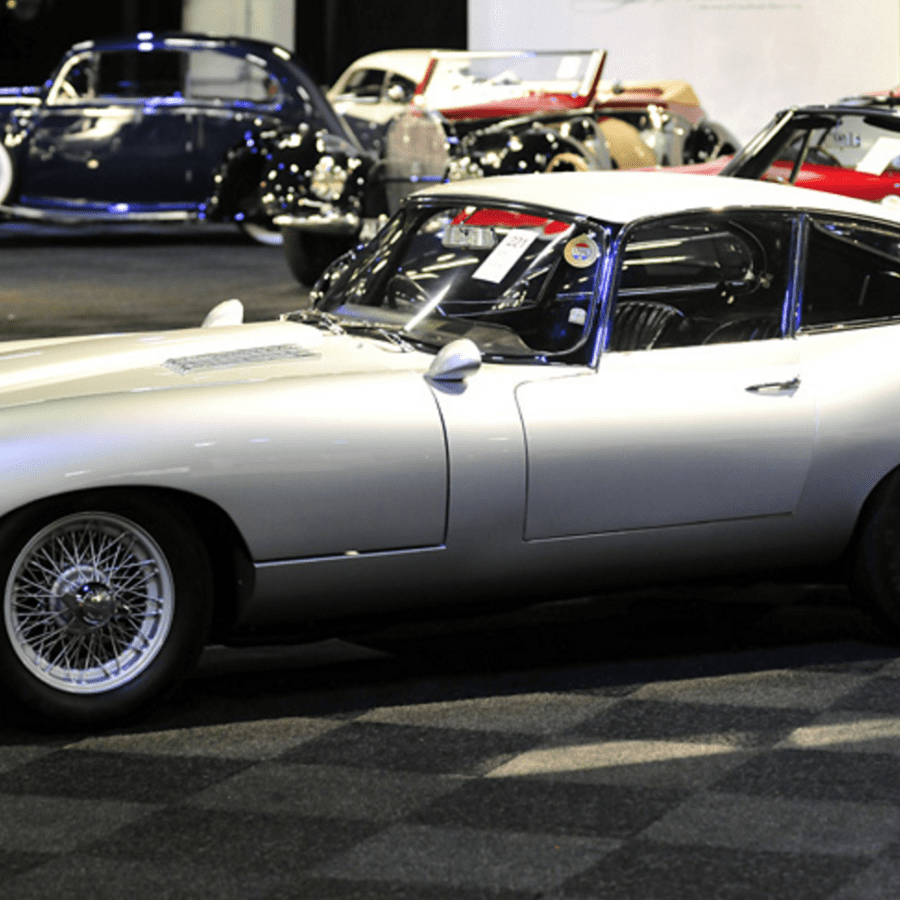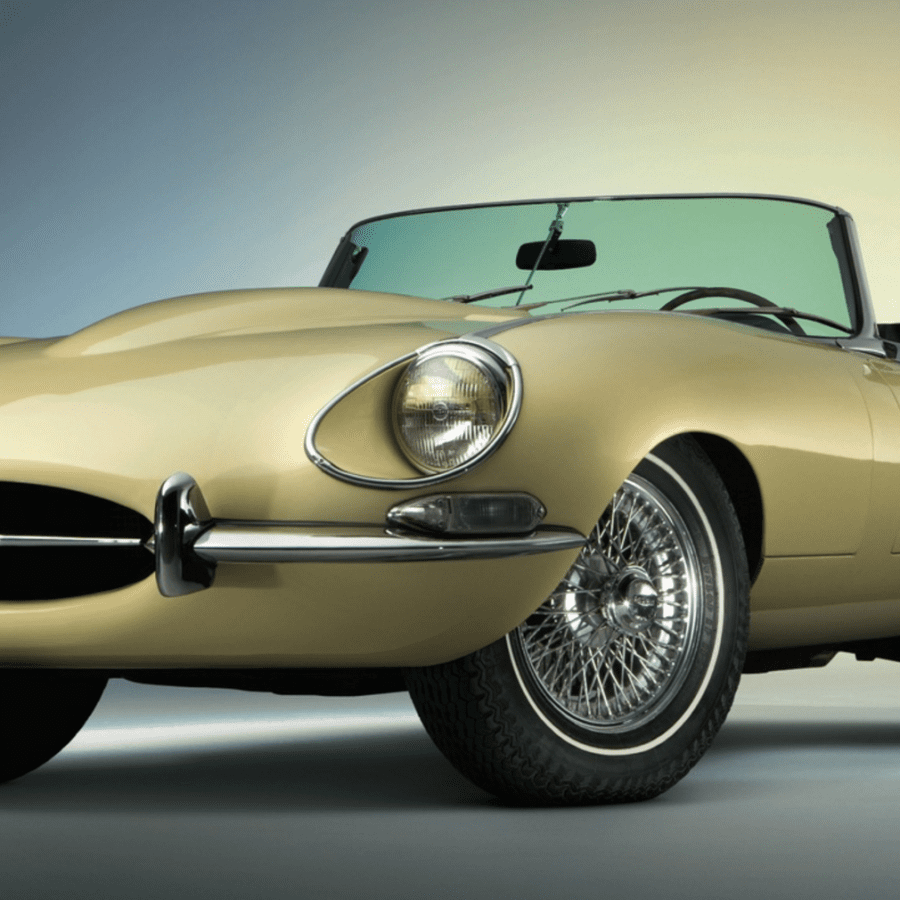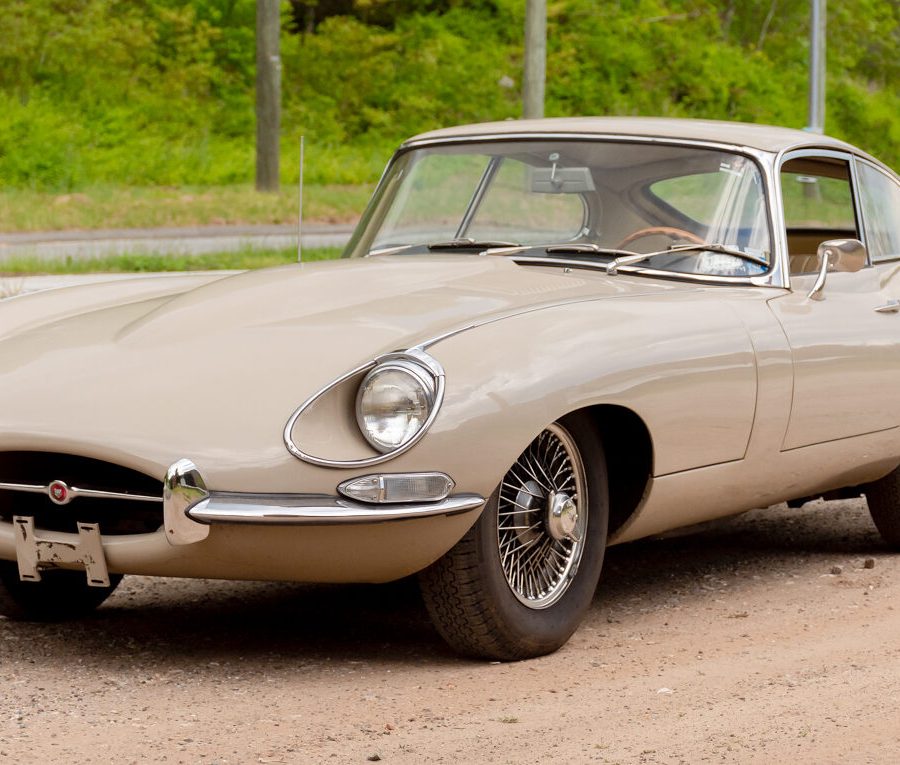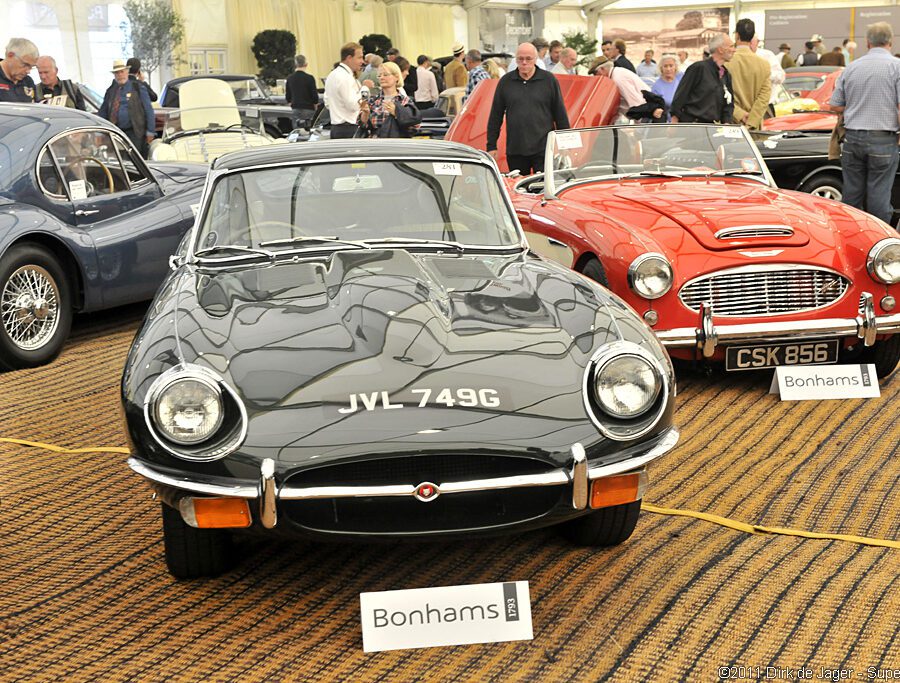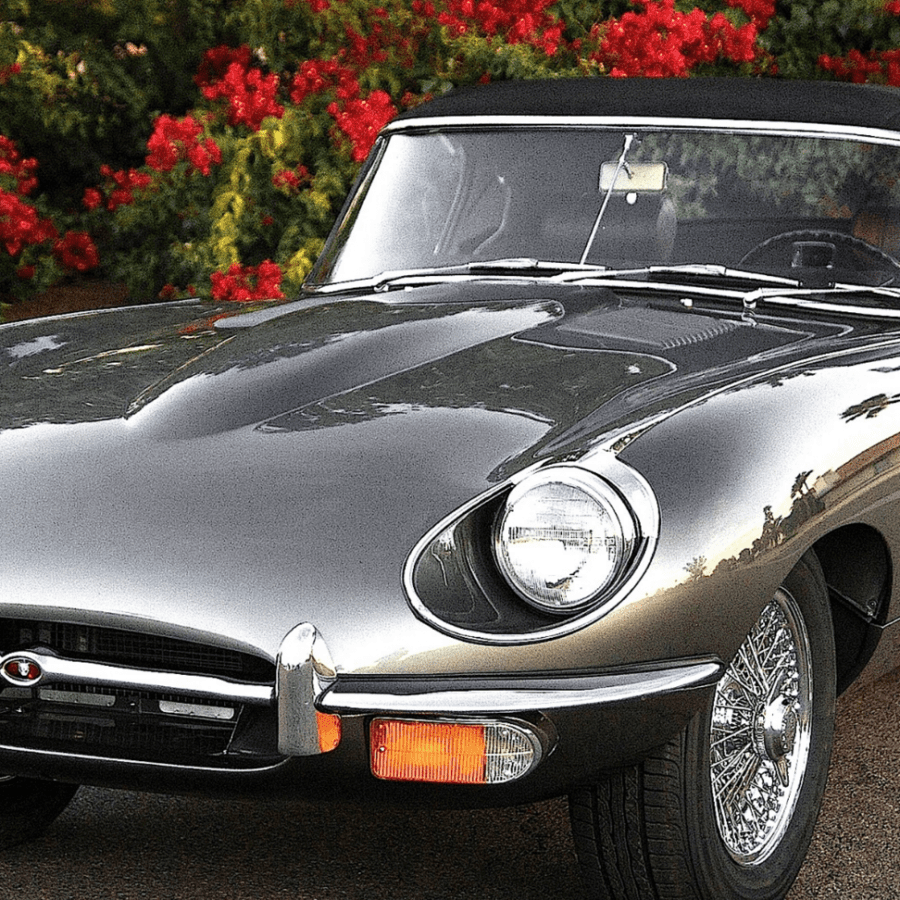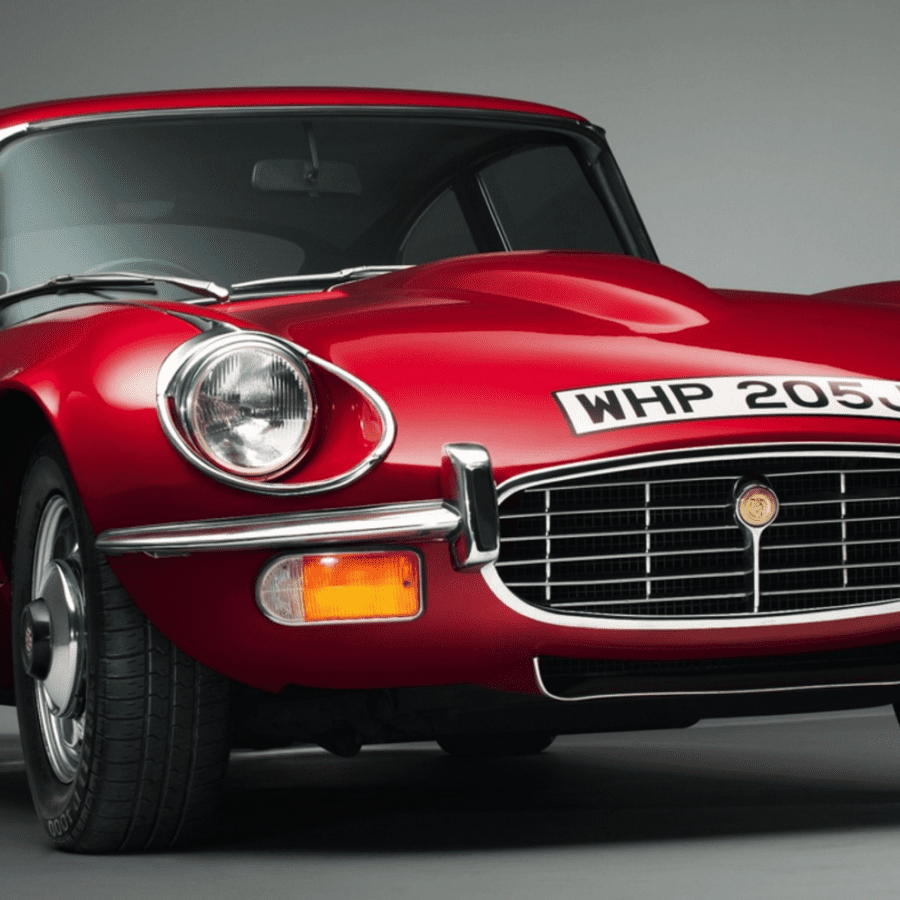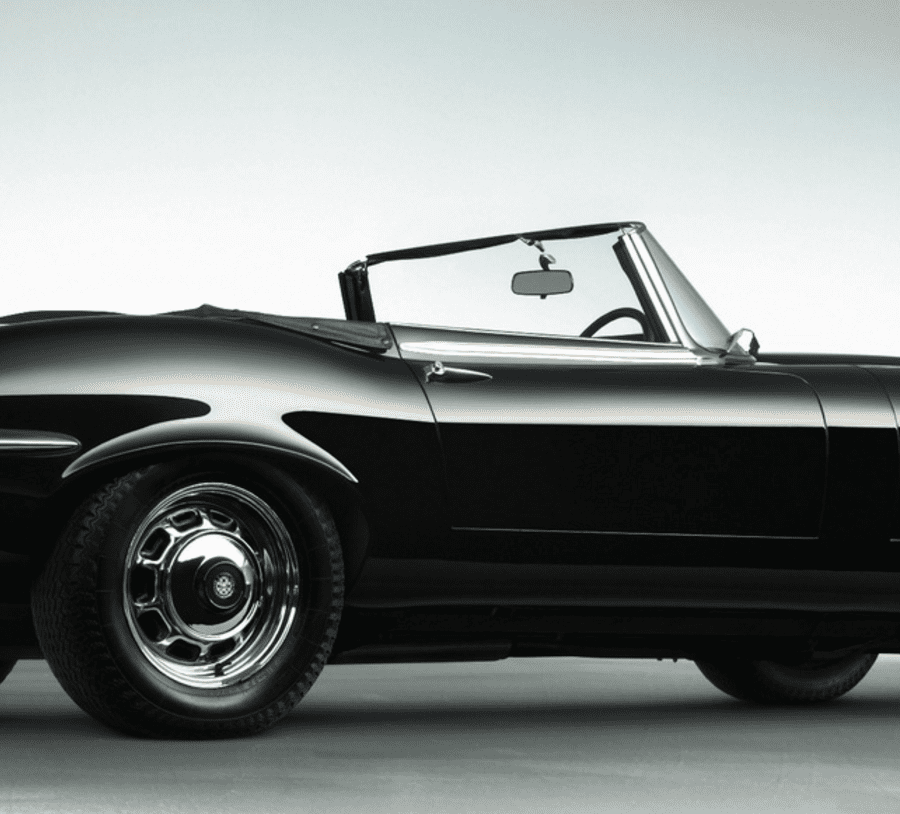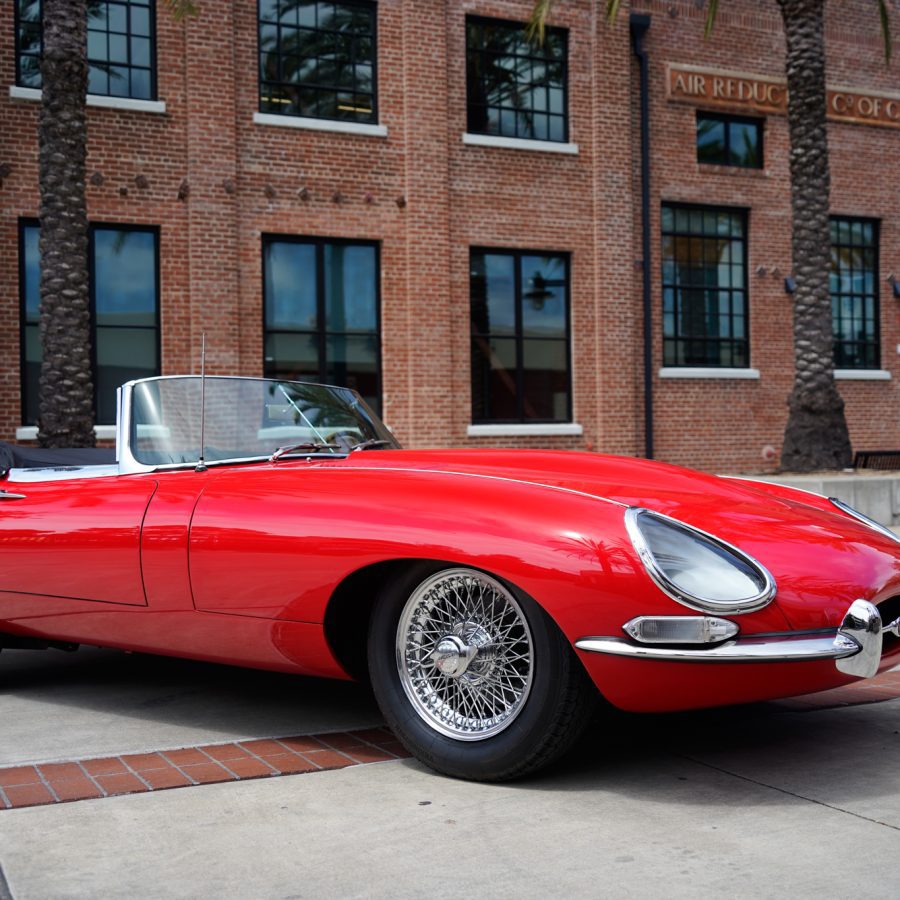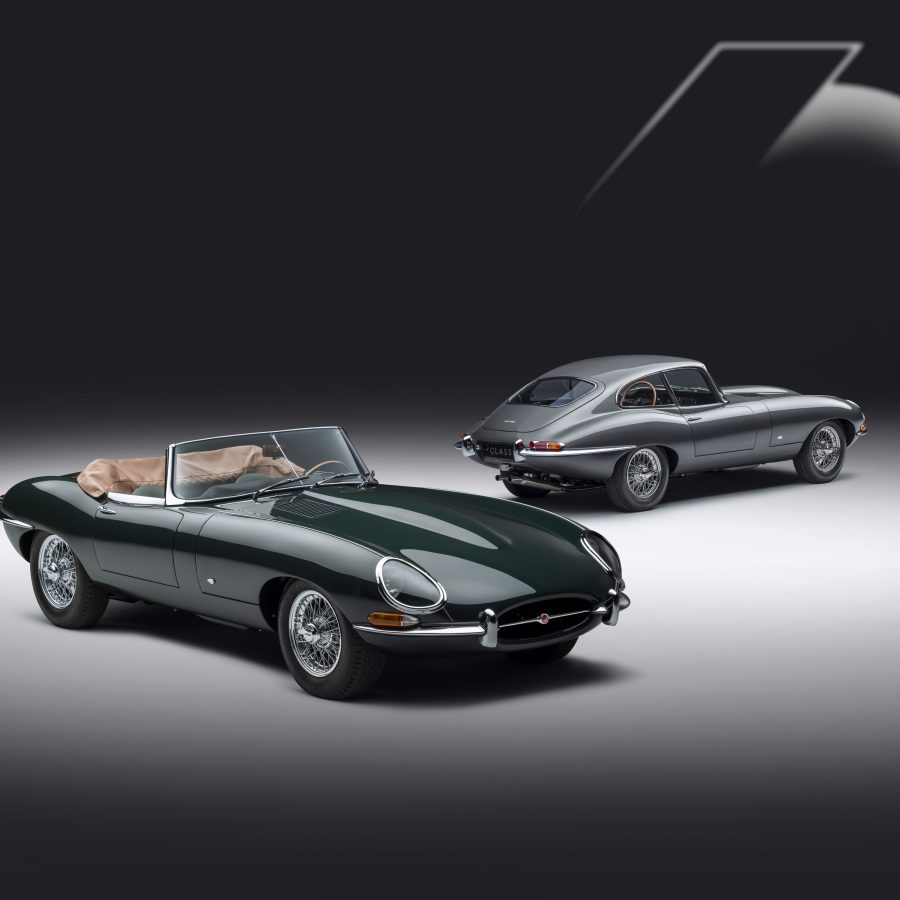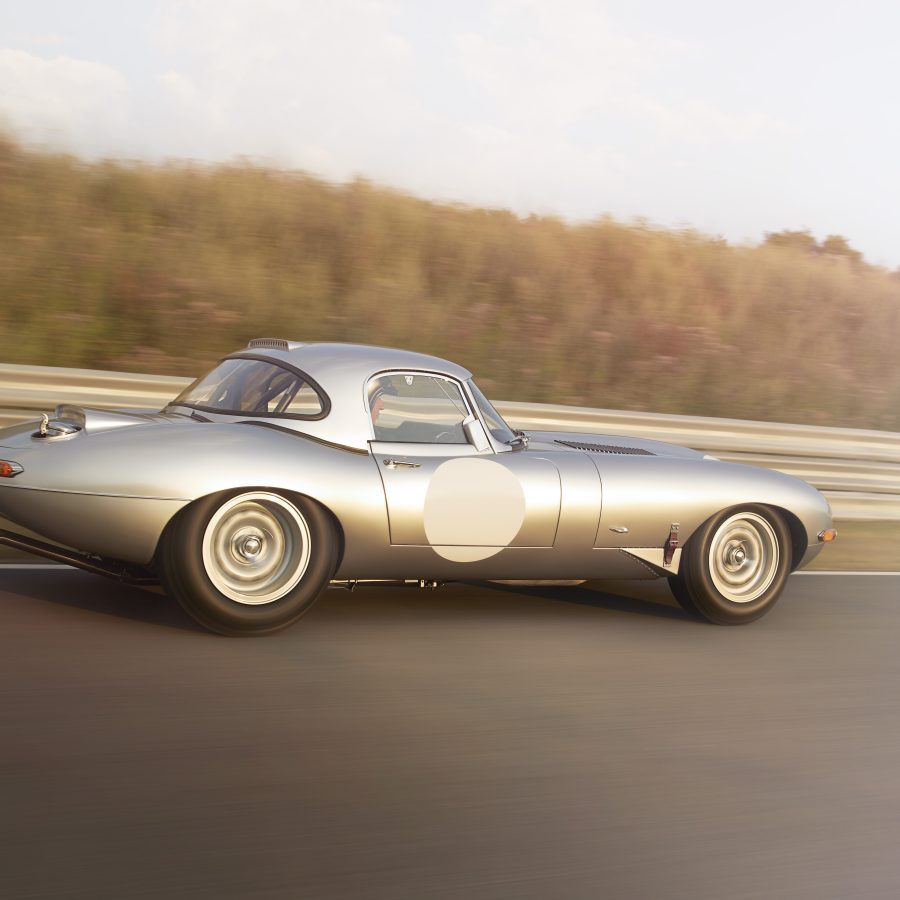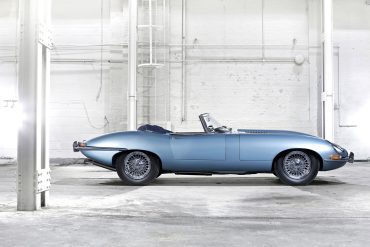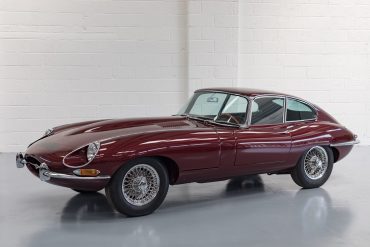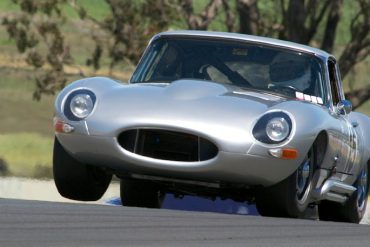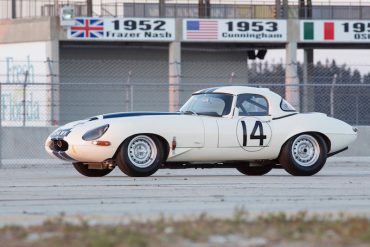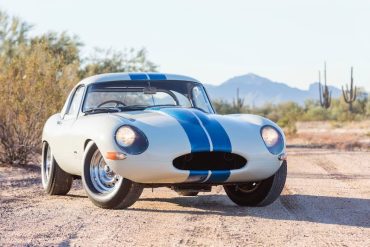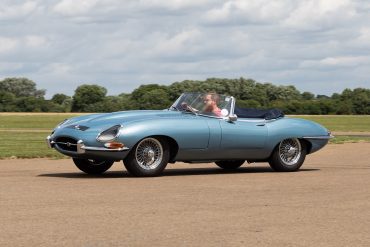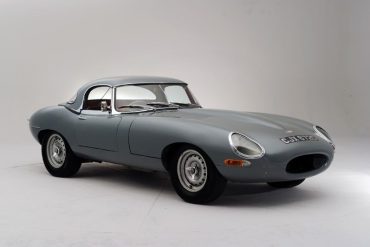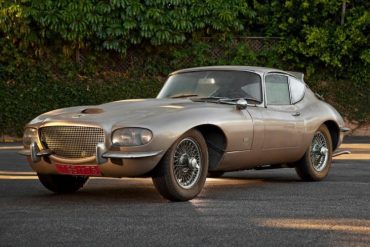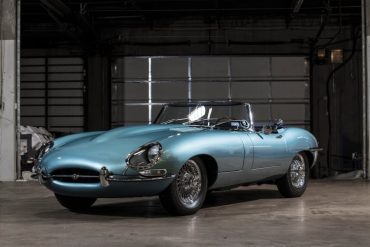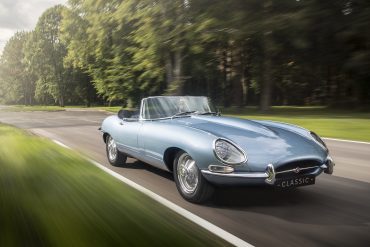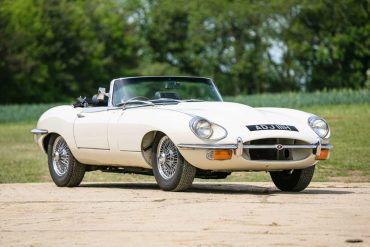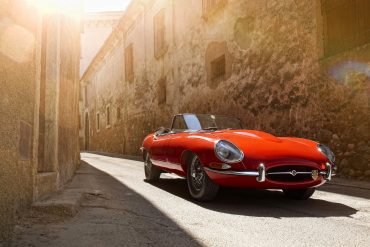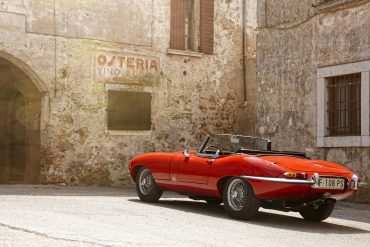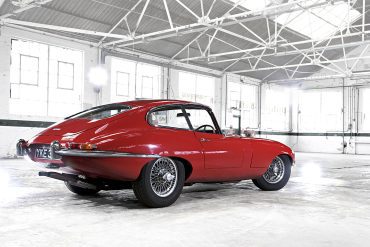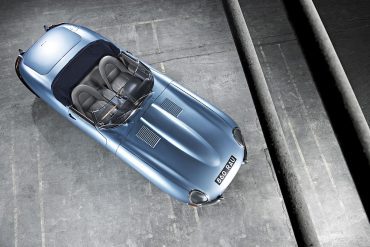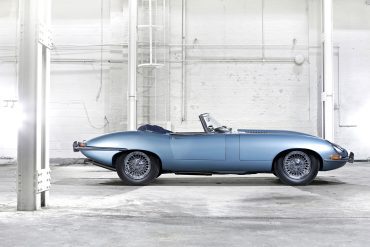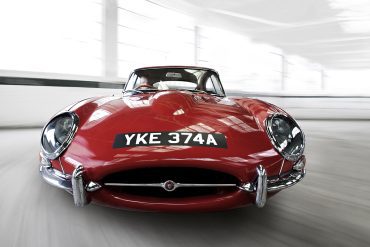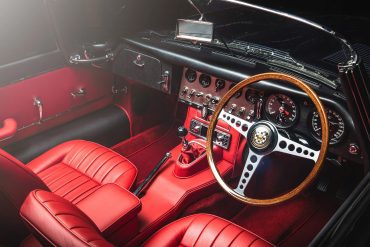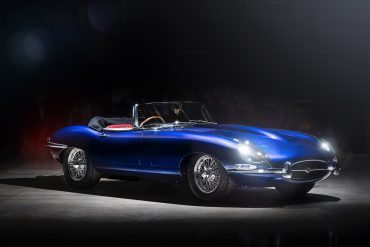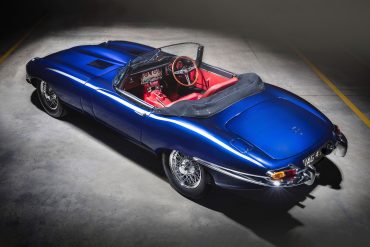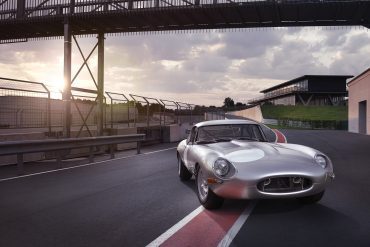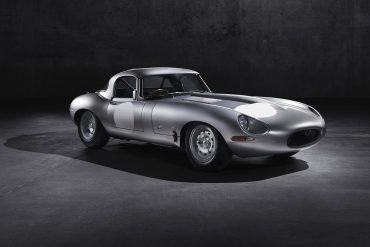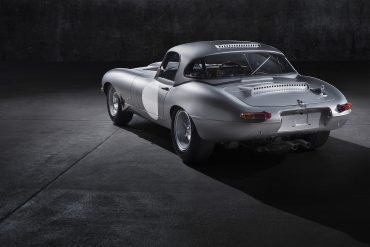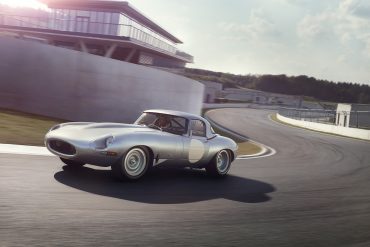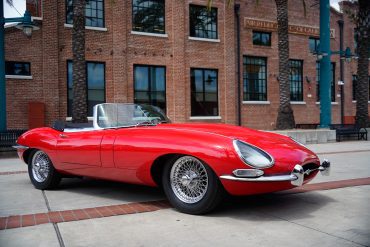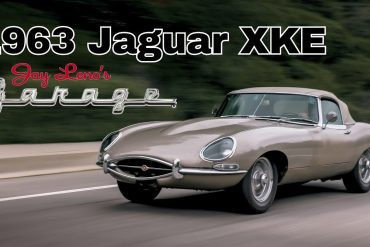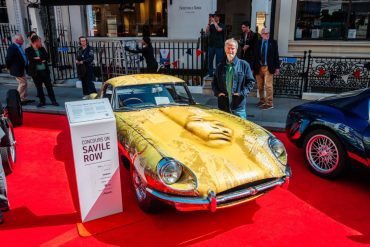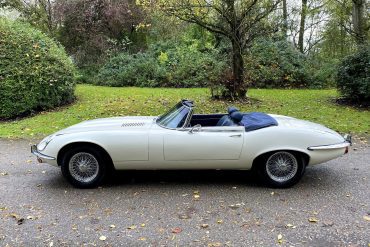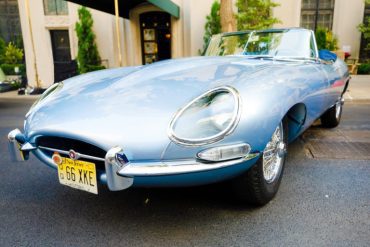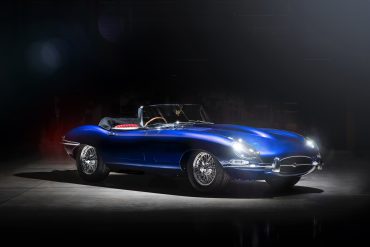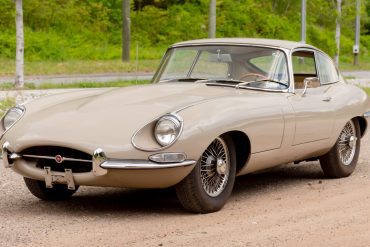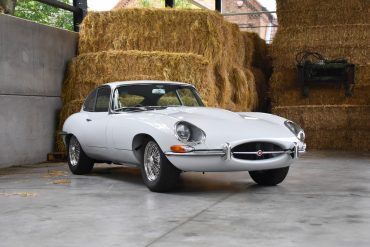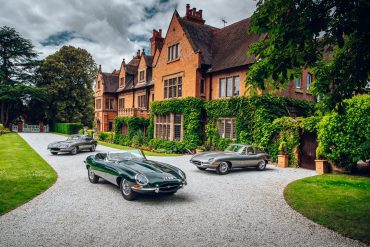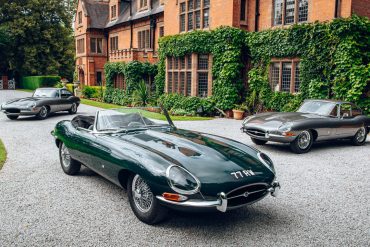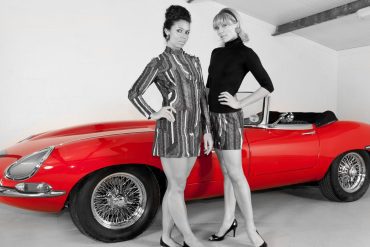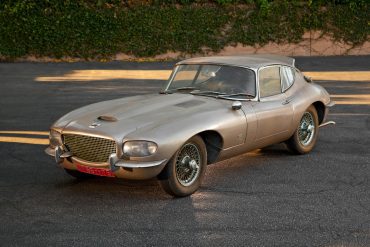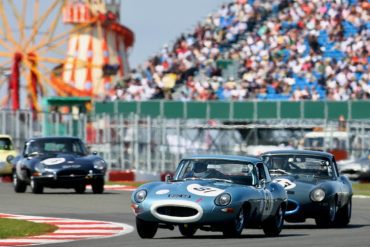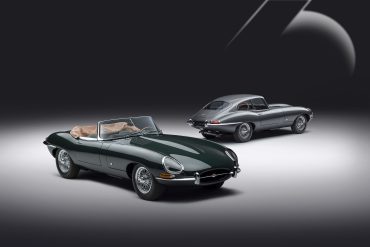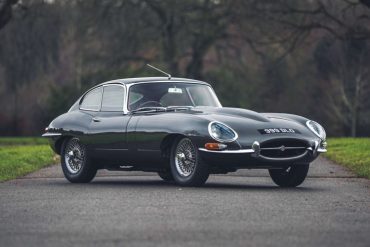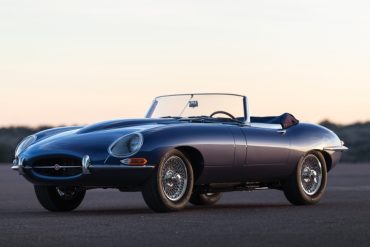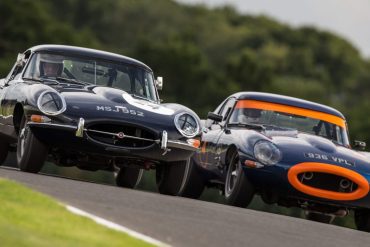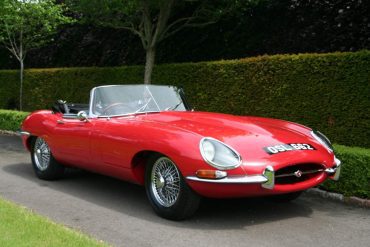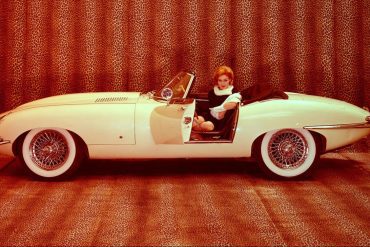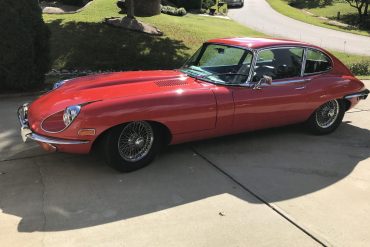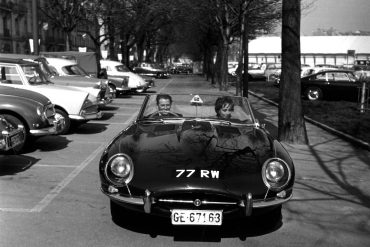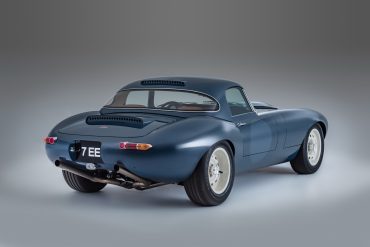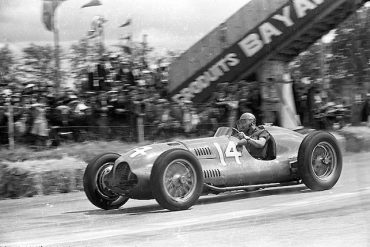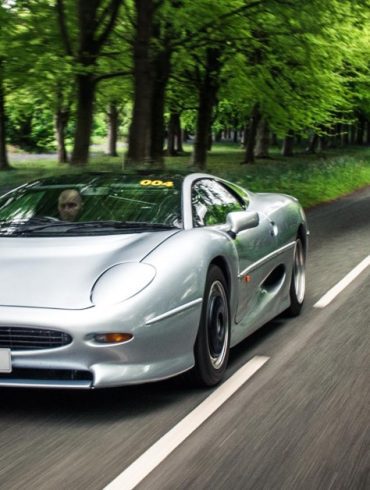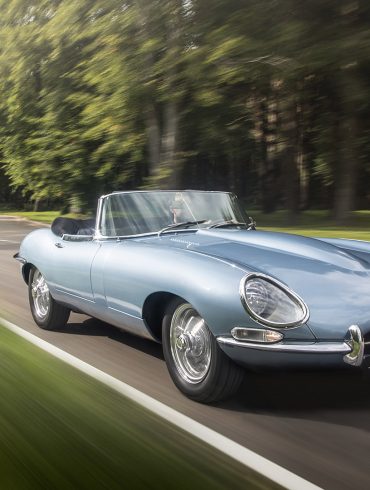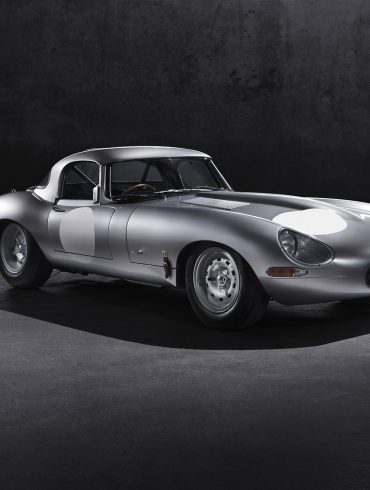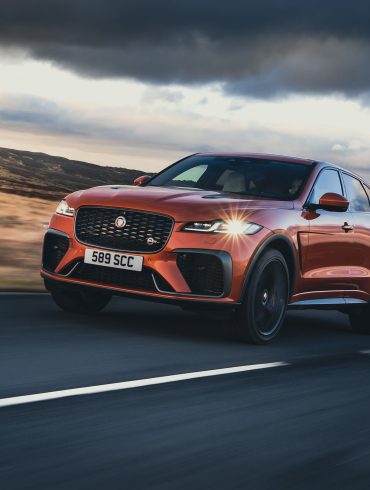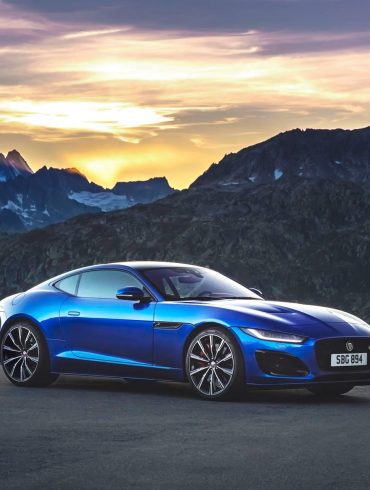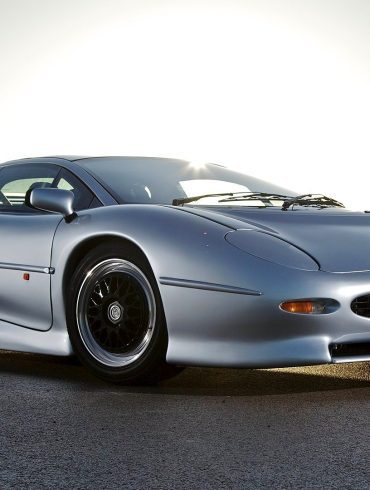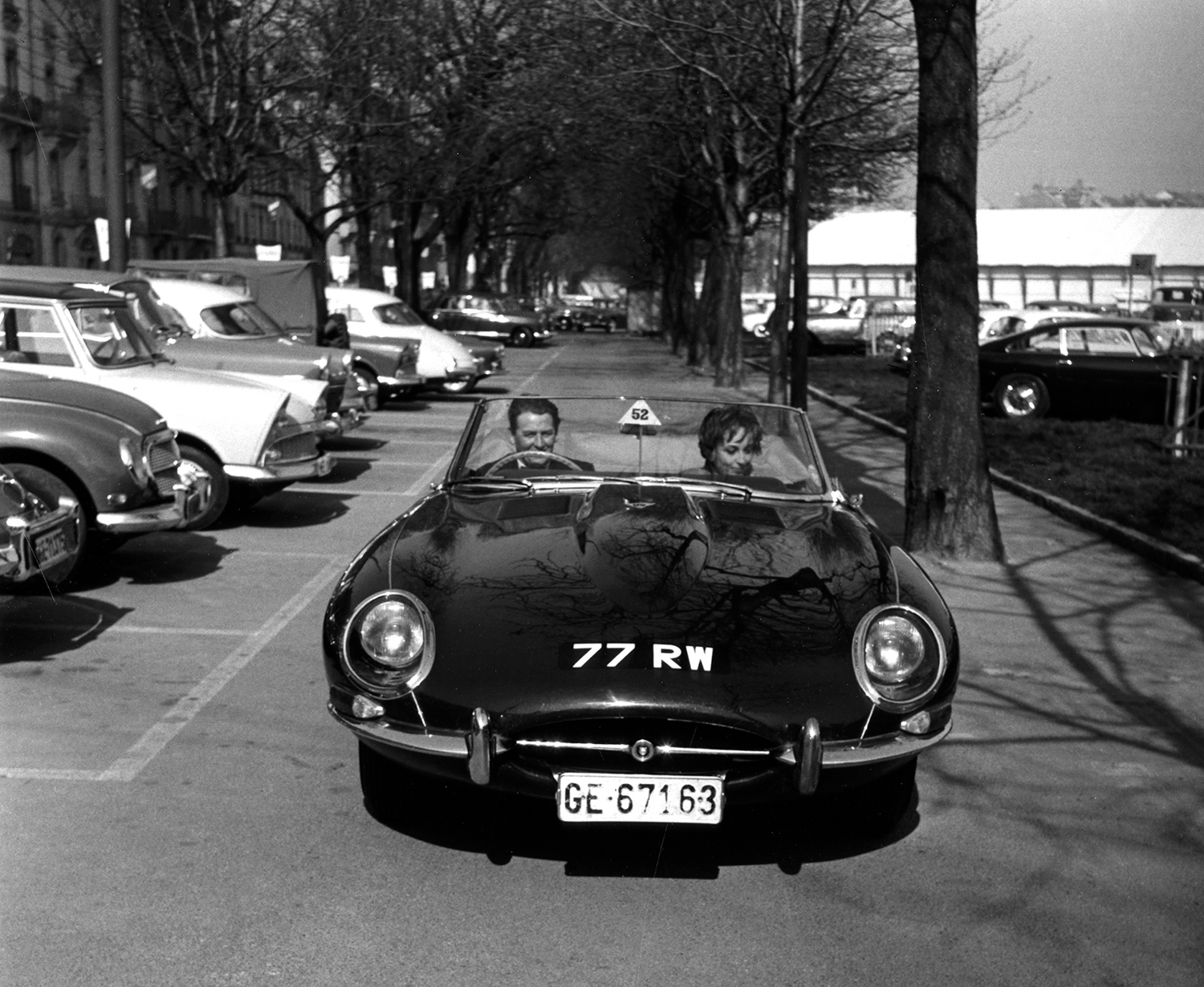Jaguar E-Type
1961 - 1974
The sleek, bullet-like shape of the Jaguar E-type is one of the most influential and imitated styling forms in sports car design. Better known in the United States as the XK-E, it is noted for its beauty, its profile, its speed, and, at the time it was introduced, its affordability. It was conceived by Jaguar to be the synthesis of a competition racer and an everyday-use car.
Overview / Featured / Series 1, 2, 3 / Models In-Depth / Production / Image Gallery / More Updates
Overview
The first ever E-Type Jaguar was the product of dedicated development at the hands of the Jaguar racing team following the D-Types iconic success at the Le Mans 24 hour race in the previous decade.
The car was first displayed to the press on 15 March 1961 to an unbelievable level of excitement, giving birth to a true automotive icon - but it almost wasn’t to be. Such was the demand for road tests from the British media that the E-Type scheduled for Geneva was still on UK shores on the evening of 14 March 1961.
So, in fittingly dramatic style, Jaguar executive Bob Berry drove the car flat-out from the factory in Coventry all the way to the Parc des Eaux-Vives in Geneva - arriving just 20 minutes before the car was to be revealed to the world. Of course, 20 minutes later, pandemonium ensued.
The car was revolutionary in many ways, but it was the stylish and iconic bodywork that set it apart from the rest of the cars currently in production. It also featured faired-in headlights and a centred twin exhaust, which was different to all other production models at the time. Rumour has it that Enzo Ferrari called it “the most beautiful car ever made” when it was released.
It wasn’t just the looks that impressed many about the Jaguar E-Type and made it one of the most desirable cars in production, though. The launch price of the car was around £2,250, comparatively valued at £38,000 in today’s money, which made it surprisingly more affordable than many other sports cars. Although the same can’t be said for the cost of the Jaguar E-Type today, as its iconic history has made it an expensive vintage on the modern market.
Throughout its production years, Jaguar released three different series of the E-type. The Series I Jaguar E-type remained in production from 1961 to 1968. From the very beginning, the E-type was offered in two distinct body styles: the roadster and the coupe. The Roadster body style features a convertible soft-top layout. In contrast, the coupe body style features the classic hard-top hatchback look.
While the vast majority of these E-types featured the iconic two-seater layout, Jaguar did begin adding a 2+2 version of the coupe-style to production in 1966. Along with this differentiation, the Series 1 E-types can also be categorized by their engine types. The Series 1 E-types produced up until 1965 all featured a 3.8L engine. In 1965, the engine in the Series 1 E-types was upgraded to a 4.2L engine.
In addition, there are certain elements that make the Jaguar Series I clearly distinguishable from the later renditions of the E-type. Some of the more recognizable features that were trademarks of the Jaguar Series I include glass-covered headlights, signal lights, and tail lights above the bumpers, and the exhaust tips being located under the license plate in the rear.
The Jaguar Series II was introduced in 1968 and stayed in production until 1971. Some key changes made to the Jaguar Series II included open headlights without glass covers, tail lights being relocated below the bumper, larger front indicators, and a new wrap-around rear bumper. The Jaguar Series II stayed consistent with the same 4.2L engine that was utilized in the later renditions of the Series I E-types.
The final rendition of the Jaguar E-type came with the Series III, which was produced from 1971 to 1975. The final series was upgraded with a 5.3L Jaguar V12 engine. In addition, the Jaguar Series III came with uprated brakes and standard power steering on all models. Some of the key features of the Jaguar Series III that make it distinguishable from previous renditions include a slatted front grille, flared wheel arches, and a badge located on the rear, denoting the V12 engine.
Jaguar E-Type Basics
Manufacturer: Jaguar Cars
Also called: Jaguar XK-E
Production: 1961–1974
Assembly: Coventry, England
Designer: Malcolm Sayer
Variants
Series 1: 1961–1968
Series 2: 1968–1971
Series 3: 1971–1974
Low Drag Coupé: 1962
Lightweight E-Type: 1963–1964
Lightweight E-Type: 2014–
Did You Know?
The E-Type was a great racer (especially on home tracks), but the Jaguar E-Type race car was never intended. It was created to be no more than a standout road car and wasn't intended for the track. Despite the lack of appetite to race the E-Type, the FIA unwittingly tempted Jaguar into signing up when they created a new category which fit the car perfectly. A GT category for production sports cars, it was impossible for Jaguar to resist.
"The most beautiful car ever made...
Enzo Ferrari
Jaguar F-Type Generations
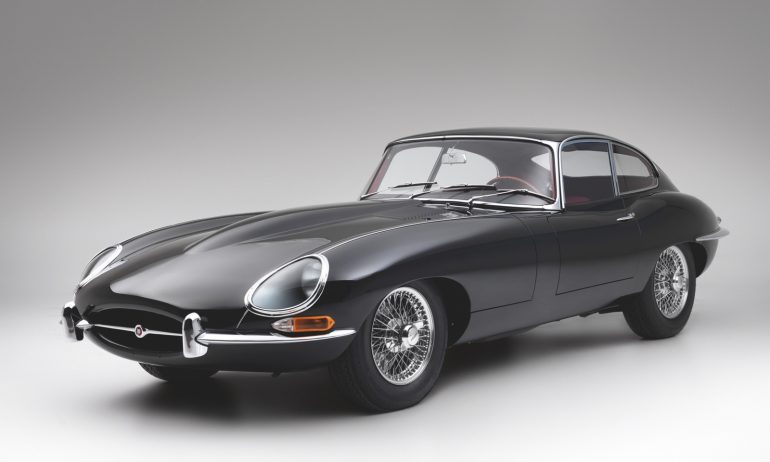
Jaguar E-Type Series 1 Basics
Also Called: Jaguar XK-E
Production: Mar 1961–1968
Production: 38,418 units
Body style: 2-door fastback coupé, 2+2 fastback, 2-door roadster
Engine: 3.8 L XK Inline 6
Engine: 4.2 L XK Inline 6
Trans: 4-speed manual
Trans: 3-speed auto (1966-)
Wheelbase: 2,438 mm (FHC / OTS), 2,667 mm (2+2)
Length: 4,453 mm (FHC / OTS), 4,685 mm (2+2)
Width: 1,657 mm (All)
Height: 1,222 mm (FHC), 1,273 mm (2+2), 1,181 mm (OTS)
Kerb weight: 1,315 kg (FHC), 1,256 kg (OTS), 1,402 kg (2+2)
Did You Know
The E-Type was unveiled at the Geneva Motor Show in 1961, and its debut was so rushed that only two cars were prepared in time. One was driven overnight from Coventry, England, to Geneva, while the other was a hastily constructed display model for the showroom floor.
Special Variants
E-Type Lightweight
E-Type Lightweight Continuation
Jaguar E-Type Series 1 (1961-1968)
The Series 1 was launched initially for overseas markets in March 1961, with its introduction in the local market following in July 1961. Initially, these vehicles were equipped with the 3.8-litre six-cylinder Jaguar XK6 engine, which was also used in the XK150S, featuring triple SU carburetors. The earliest models were distinct, featuring external bonnet latches that needed a tool to open and a flat-floor construction, making them especially rare and sought-after. Subsequent modifications included recessed floors for enhanced legroom and internal bonnet latches. The engine size was expanded to 4.2 litres in October 1964.
Despite the increase in size, the 4.2-litre engine maintained the 265 bhp power output and 150 mph top speed of its predecessor, but with a 10% increase in torque. Although the acceleration was similar, the larger engine improved throttle response, benefiting drivers who preferred not to downshift frequently. Significant redesigns were made to the engine block, crankshaft, and additional components, including the introduction of a new alternator and an electric cooling fan.
Autocar reviewed a UK-spec E-Type 4.2 fixed head coupe in May 1965, noting a top speed of 153 mph and remarkable acceleration. Similarly, Motor magazine's October 1964 review of the same model highlighted its unprecedented speed and effortless acceleration capabilities.
All E-Types boasted advanced features like independent coil spring rear suspension, torsion bar front suspension, and power-assisted four-wheel disc brakes, a pioneering feature first introduced by Jaguar in 1958. Distinguishing features of the Series 1 included glass-covered headlights, distinctive front and rear design elements, and specific upholstery and gearbox options that varied between the 3.8-litre and 4.2-litre models. The 4.2-litre models also featured enhanced comfort and mechanical improvements.
In terms of differences, the 3.8-litre cars have leather-upholstered bucket seats, an aluminium-trimmed centre instrument panel and console (changed to vinyl and leather in 1963), and a Moss four-speed gearbox that lacks synchromesh for first gear (“Moss box”). 4.2-litre cars have more comfortable seats, improved brakes and electrical systems, and an all-synchromesh four-speed gearbox.
In 1966, a 2+2 version of the coupé was introduced, with a longer body and optional automatic transmission. The very last of the Series 1 models were unique, featuring open headlights right before transitioning to the "Series 1½" models, which included several updates in response to American regulations, such as different carburetion affecting performance and new safety standards affecting design elements like the wheel knock-off nuts.
Less widely known, right at the end of Series 1 production, but prior to the transitional “Series 1½” referred to below, a small number of Series 1 cars were produced, with open headlights. These Series 1 cars had their headlights modified by removing the covers and altering the scoops they sit in, but these Series 1 headlights differ in several respects from those later used in the Series 1½ (or 1.5), the main being they are shorter at 143 mm from the Series 1½ at 160 mm.
Following the Series 1 there was a transitional series of cars built in 1967–68 as model year 1968 cars, unofficially called “Series 1½.” Due to American pressure the new features were not just open headlights, but also different switches (black plastic rocker switches as opposed to the Series 1 toggle switches), de-tuning (using two Zenith-Stromberg carburetters instead of the original three SUs) for US models, ribbed cam covers painted black except for the top brushed aluminum ribbing, hood frames on the OTS that have two bows, and other changes. The biggest change between 1961-1967 Series 1 E-Types and the 1968 Series 1.5 was the reduction in the number of carburetors from 3 to just 2, resulting in a loss in horsepower from 265 to 246. Series 2 features were gradually introduced into the Series 1, creating the unofficial Series 1½ cars, but always with the Series 1 body style.
Jaguar E-Type Series 2 (1968-1971)
In production from 1968 to 1971, Series 2 E-Types featured various notable changes to the previous series.
Hallmarks of Series 2 cars are a wrap-around rear bumper, re-positioned and larger front indicators and tail lights below the bumpers, an enlarged “mouth” which aided cooling but detracted from the Series I design purity, twin electric fans, plastic rocker switches in place of the Series I toggle switches, and, of course most importantly, a material downgrading in performance resulting from a switch from the three SU carburetors used in Series I models to a mere two “smogged” Stromberg carbs, reducing horsepower from 265 to 246 and reducing torque from 283 to 263.
The Series 2 introduced a number of design changes, largely due to U.S. design legislation. The most distinctive exterior feature is the absence of the glass headlight covers, which affected several other imported cars, like the Citroën DS, as well. Unlike other cars, this retrograde step was applied worldwide for the E-Type, not just to Americans living under the authority of the National Highway Traffic and Safety Administration.
A combination steering lock and ignition key was fitted to the steering column, which replaced the dashboard mounted ignition switch and charismatic push button starter. A new steering column was fitted with a collapsible section in the event of an accident.
New seats were fitted which allowed the fitment of head restraints, as required by U.S. law beginning in 1969. The interior and dashboard were also redesigned; rocker switches that met US health and safety regulations were substituted for toggle switches. The dashboard switches also lost their symmetrical layout.
The engine is easily identified visually by the change from smooth polished cam covers to a more industrial “ribbed” appearance. It was de-tuned in the US with twin Strombergs and larger valve clearances, but in the UK retained triple SUs and the much tighter valve clearances. (Series 1½ cars also had ribbed cam covers). This detuned engine produced 245 hp (183 kW), a drop of 20 hp.
Air conditioning and power steering were available as factory options.
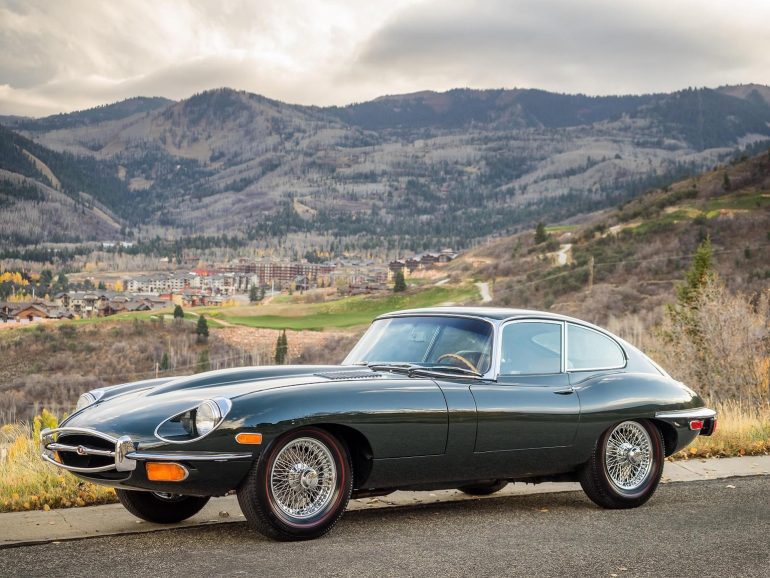
Jaguar E-Type Series 2 Basics
Also Called: Jaguar XK-E
Production: 1968–1971
Production: 18,809 units
Body style: 2-door fastback coupé, 2-door 2+2 fastback coupé, 2-door roadster
Engine: 4.2 L XK Inline 6
Trans: 4-speed manual
Trans: 3-speed auto
Kerb weight: 1,369 kg (FHC), 1,247 kg (OTS), 1,402 kg (2+2)
Did You Know
While the iconic Series 1 E-Type had sleek, covered headlights, the Series 2 featured open headlights without the glass covers. This was done to comply with changing US safety regulations. The open headlights give the Series 2 a distinct and slightly more aggressive appearance.
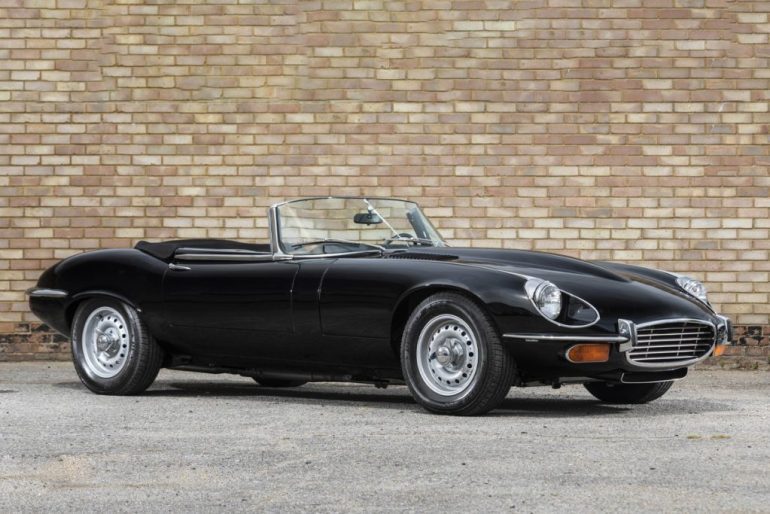
Jaguar E-Type Series 3 Basics
Also Called: Jaguar V-12
Production: 1971–197
Production: 15,287 units
Body style: 2-door 2+2 coupé, 2-door roadster
Engine: 5.3 L Jaguar V12 engine
Wheelbase: 2,667 mm (All)
Length: 4,684 mm)(2+2), 4,686 mm)(OTS)
Width: 1,676 mm (2+2), 1,679 mm (OTS)
Height: 1,242 mm (2+2), 1,222 mm (OTS)
Kerb weight: 1,525 kg (2+2), 1,533 kg (OTS)
Did You Know
The Series 3 marked a major shift for the E-Type, introducing a powerful 5.3-liter V12 engine. This silky-smooth engine provided a significant boost in power and transformed the car's character, making it more of a grand tourer than a pure sports car.
Jaguar E-Type Series 3 (1971-1974)
The last series in the E-Type's production run, Series 3 cars featured various visual changes and mechanical upgrades. Visually, S3 cars feature a slatted front grill, flared wheel arches, and quad exhaust pipes. Mechanically, standard power steering and up-rated brakes. Additionally, this was the only E-Type offered with Jaguar's V12 engine.
The E-Type Series 3 was introduced in 1971, with a new 5.3 L twelve cylinder Jaguar V12 engine, uprated brakes and standard power steering.
Optionally an automatic transmission, wire wheels and air conditioning were available. The brand new V12 engine was originally developed for the 24 Hours of Le Mans. It was equipped with four Zenith carburetors.
The final engine was claimed to produce 203 kW (272 hp), more torque, and a 0-60 mph acceleration of less than 7 seconds, but this bhp figure was reduced in later production.
The short wheelbase FHC body style was discontinued, with the Series 3 available only as a convertible and 2+2 coupé. Performance was competitive with contemporary luxury marques.
The newly used longer wheelbase now offered significantly more room in all directions. The Series 3 is easily identifiable by the large cross-slatted front grille, flared wheel arches, wider tires, four exhaust tips and a badge on the rear that proclaims it to be a V12. Cars for the US market were fitted with large projecting rubber bumper over-riders (in 1973 these were on front, in 1974 both front and rear) to meet local 5 mph (8 km/h) impact regulations, but those on European models were considerably smaller. US models also have side indicator repeats on the front wings.
There were also a very limited number of six-cylinder Series 3 E-Types built. These were featured in the initial sales procedure but the lack of demand stopped their production. When leaving the factory the V12 Open Two Seater and V12 2 ± 2 originally fitted Dunlop E70VR − 15 inch tires on 15 × 6K wire or solid wheels. The Jaguar factory claimed that fitting a set of Jaguar XJ12 saloon steel-braced radial-ply tires to a V12 E-Type raised the top speed by as much as 8 mph.
The production car was fitted with textile-braced radial ply tires. This fact was reported by the editor of The Motor magazine in the long-term test of his E-type edition dated 4 August 1973, who ran a V12 fixed head for a while.
Jaguar E-Type Special Editions
Two limited production E-Type variants were made as test beds, the low drag coupé and lightweight E-Type, both of which were raced. More recently, Jaguar decided to do a continuation of the Lightweight E-Type.
The Low Drag Coupe (1962)
The Low Drag Coupé was based on the E-Type, but with significant modifications for improved aerodynamics. The car featured a sleek, elongated, and more aerodynamically efficient body shape compared to the standard E-Type. The design was heavily influenced by aerodynamic principles, aiming to reduce air resistance and increase top speed. The bodywork was crafted from lightweight aluminum, contributing to its low drag coefficient and reduced overall weight.
Under the hood, the Low Drag Coupé was equipped with a highly tuned version of Jaguar's 3.8-liter XK inline-six engine. This engine was modified to produce significantly more power than the standard E-Type's unit, with enhancements such as a wide-angle cylinder head, dry sump lubrication, and a higher compression ratio. These modifications allowed the car to achieve exceptional performance figures, with a top speed markedly higher than the regular E-Type and impressive acceleration capabilities.
The Low Drag Coupé was explicitly developed for racing, with the intention of competing against the fastest GT cars of its era.
The Lightweight E-Type (1963-1964)
The Jaguar Lightweight E-Type, produced during 1963 and 1964 was Jaguar's ambitious attempt to dominate GT racing by building a vehicle that combined the E-Type's inherent beauty and performance with extensive weight reduction and enhanced power.
The Lightweight E-Type was conceived as a more performance-focused iteration of the already successful Jaguar E-Type (Series 1). The primary goal was to compete more effectively against Ferrari and Aston Martin in GT class racing. Jaguar planned to build 18 units, but only 12 were originally constructed.
The most distinctive feature of the Lightweight E-Type is its extensive use of aluminum. Both the body panels and monocoque chassis were constructed from this lightweight material, significantly reducing the car's overall weight compared to the standard steel-bodied versions. The car's exterior maintained the iconic E-Type silhouette but incorporated various aerodynamic enhancements and modifications, such as a lowered roofline, extended front end, and a more streamlined profile, all aimed at reducing drag and increasing high-speed stability.
Under the bonnet, the Lightweight E-Type was powered by an aluminum-block version of Jaguar's famous XK engine. This 3.8-liter inline-six engine was significantly modified with a wide-angle cylinder head, Lucas mechanical fuel injection, a dry sump lubrication system, and an increased compression ratio. Power came in around 300 bhp, though some sources suggest even higher numbers.
The Lightweight E-Types were primarily campaigned by privateer racers, as Jaguar had shifted its factory racing focus to other projects by the time the cars were completed. Despite facing stiff competition from the likes of Ferrari's 250 GTO, the Lightweight E-Types achieved notable success in various international motorsport events.
The Lightweight E-Type Continuation (2014)
In 2014, Jaguar embarked on a remarkable project to resurrect one of its most iconic models, the Lightweight E-Type, through its Special Operations division. This initiative, known as the Lightweight E-Type Continuation series, aimed to complete the original intention of producing 18 Lightweight E-Types, a plan that was only partially realized in the 1960s when just 12 of the intended 18 were built.
Jaguar utilized the original 1960s blueprints, techniques, and materials to construct the Continuation models, ensuring they were as faithful to the original Lightweight E-Types as possible. Each vehicle was hand-built, with meticulous attention to detail, employing the same specifications and materials as the originals. This included the extensive use of aluminum for the body and engine block, which significantly reduced the car's weight, just as it did for the original series.
The cars were equipped with the same 3.8-liter straight-six XK engine, known for its impressive power output and distinctive sound. These engines were built to the exact original specifications, including the triple Weber carburetors, aluminum block, and dry sump lubrication, delivering an authentic driving experience that mirrored that of the 1960s racers.
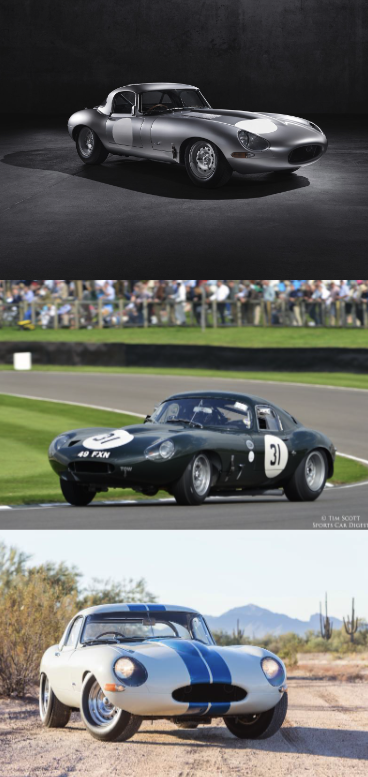
Jaguar E-Type Production Numbers
Robson quoted production numbers for the E-Type below.
You are trying to load a table of an unknown type. Probably you did not activate the addon which is required to use this table type.
"It's difficult to think of anything that looks better. Certainly nothing on four wheels."
Jeremy Clarkson


